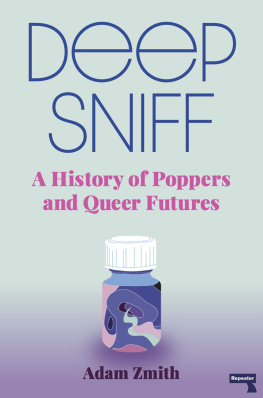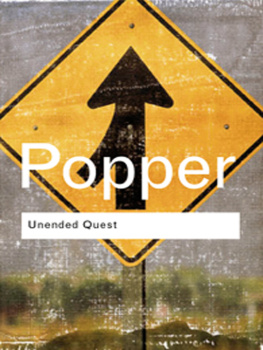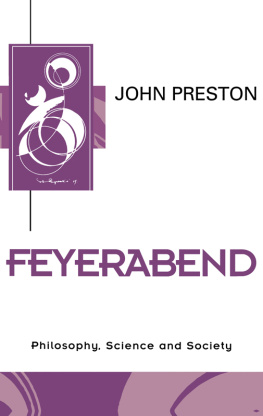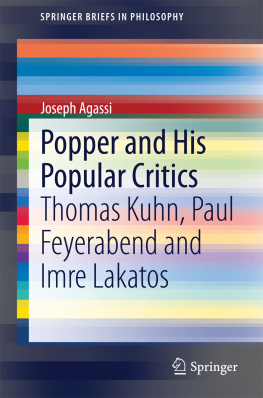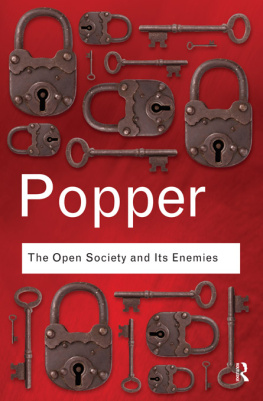
A fascinating, joyful social and personal history of an underrated drug. Zmith manages to capture not just the intriguing story of poppers and their role in queer life, but also something of their ineffable chemical pleasure.
HUW LEMMEY, AUTHOR OF UNKNOWN LANGUAGE
A pharmacornucopia of sensory pleasures, Adam Zmiths Deep Sniff is an entire queer curriculum opened up by poppers: an anti-skool of body chemistry, dance floor history, sci-fi physics, self-pleasuring craft design technologies, gymnastic artistry (courtesy of Luis Amlia), and a queer literature of mutable masculinities. Celebrating the open, the voracious, and the capacious aspects of the QUILTBAG community and continuity, Zmith says RELAX!, linking the beautiful apertures of sphincters and wormholes into a cosmic as well as anti-capitalist, queer vision of possibility.
SO MAYER, AUTHOR OF A NAZI WORD FOR,
A NAZI THING
Absorbing, riotous, keenly-researched and utterly celebratory, Deep Sniff is exactly the kind of queer history we need right now! Through the heady prism of poppers, Zmith explores the queer body with such curiosity and nuance and explodes just how very political and ongoing the search for autonomous pleasure really is. Deep Sniff, with all its joyful openness and rigorous scholarship, brings what has existed in the margins for too long into the centre of the page with a dizzying and multifarious roar!
RICHARD SCOTT, AUTHOR OF SOHO


Published by Repeater Books
An imprint of Watkins Media Ltd
Unit 11 Shepperton House
89-93 Shepperton Road
London
N1 3DF
United Kingdom
www.repeaterbooks.com
A Repeater Books paperback original 2021
Distributed in the United States by Random House, Inc., New York.
Copyright Adam Zmith 2021
Adam Zmith asserts the moral right to be identified as the author of this work.
ISBN: 9781913462420
Ebook ISBN: 9781913462604
All rights reserved. No part of this publication may be reproduced, stored in a retrieval sys-tem, or transmitted, in any form or by any means, electronic, mechanical, photocopying, re-cording or otherwise, without the prior permission of the publishers.
This book is sold subject to the condition that it shall not, by way of trade or otherwise, be lent, re-sold, hired out or otherwise circulated without the publishers prior consent in any form of binding or cover other than that in which it is published and without a similar condi-tion including this condition being imposed on the subsequent purchaser.

Printed and bound in the UK by TJ Books
CONTENTS
1. Undesirable Purposes
A woman wearing smart clothes is reading about the exhibition when she notices the creature. She steps back and watches carefully. The looming figure has pale skin and black body hair, and it wears a red leotard that is adorned with glistening rhinestones. It could be a normal guy with a beard in east London. But tonight in the gallery he is a hairy gymnast performing a routine among strangers.
A person in round specs pauses their conversation to watch the performer dip onto his hands and knees, press his belly to the floor, stretch his feet then his hands... mimicking the length of the line. It is a thin white strip, pasted onto the floor, and it measures 16.97056274847714 metres slicing right through the gallery space. A pair of people drinking wine from paper cups try to ignore the performance, but they also realise that they are standing on the performers line, and he is moving towards them. The creature-gymnast seems to balance, to fit all its twists and turns, its pointed toes and bent knees, onto that line.
The routine is that of a gymnast, yes, but also that of a dancer, of an actress on a stage, a person trying to live, a soul desperate to hit its marks on the line. The length is the same as the diagonal across the 12 x 12m square sprung floor where a gymnast usually shows her best skills. The line is a constraint on her power but also a channel for it. The creature brings all this meaning into the gallery tonight, at the opening of a group show that mostly comprises pictures and objects. As the visitors talk to each other the artworks are a backdrop except for the gymnast who penetrates them in sparkling sweatylycra. Concentrated, poised, mischievous, the performer is Luis Amlia and he is showing us a life on the balance beam.
Amlia conceived of this piece as part of his ongoing performance work that takes on various forms. His project is to express an embodiment of female gymnasts and actresses. What he feels for them is more than an affinity or an admiration. His work is not satire, not drag. When his obsessions coalesce into these precise, rehearsed manoeuvres across a film set or a gymnastics arena, they are moving as Amlia feels. Never good enough. Desperate to connect. Waiting to be judged. And yet! His act of performing these moves on his line somehow eliminates the negative feelings; he is freed of them, for a moment.
If there is something queer here, it is an attitude. When we watch Luis, we are all moving with him, along the line, cutting through official space.
Looking into the history of poppers requires the same attitude, and that is why this book opens with Amlias performance of a piece he named 16.97056274847714, which was performed in London at the Queer Art(ists) Now group art show in March 2020. A history of poppers finds dozens of characters like Amlia: different, daring, difficult. Whenever Amlia performs, there is something wrong about him. His non-binary body is hairy, pale, perceived as male and yet his soul is textured differently, light and dark, every gender and none. The creature is mesmerising: a utopia of being, free from categories, cutting through the expectations placed on him.
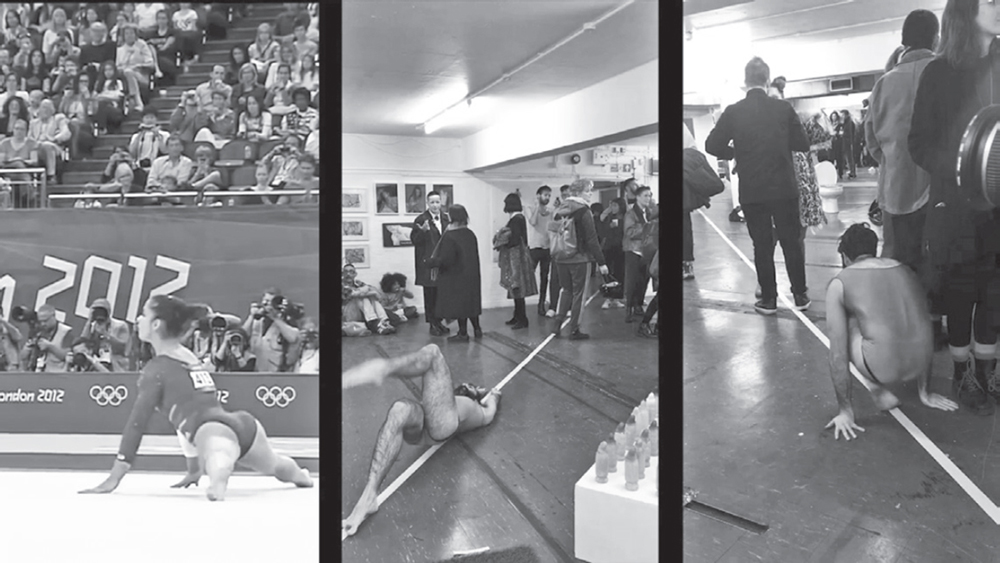
I wish I had seen Amlias performance when I was an adolescent, although I probably would have rejected it. As I grew up, I allowed categories and expectations far too much power, and I didnt have the courage of Amlia to explore them artistically or to try to shake them off. I would have seen the freedom he implied, and turned away with teenage worry.
Growing up I panicked about who I desired, and I felt the pressure to be a man, whatever that meant. It was bizarre to see that the mens bodies I wanted as my own were also the ones I wanted to touch. I knew that this meant other people would place me in a certain category, which bothered me. People see me as gay and as a man. These categories were created long before I was. I inherited them, and had to fit them even though I didnt want to. Today, Im never comfortable with them, but at least I have queer, which is better. In this book I want to sniff out the multitudes contained in that word, and how this could help us to feel our way towards a future of uninhibited bodies and potential. To do that, I have to know where the idea of these labels gay and man came from in order to interrogate them. A history of poppers has some answers.
Next page
